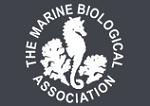APHOTOMARINE
An educational resource dedicated mainly to the photography
and diversity of marine life that can be found in coastal waters
and intertidal areas of Great Britain and Ireland by David Fenwick.

Conopeum seurati
- zooids with operculum 1
Cheilostome bryozoan
Conopeum seurati
- zooids with operculum 2
Cheilostome bryozoan
Conopeum seurati
- zooids close-up 1
Cheilostome bryozoan
Conopeum seurati
- colony under rock 1
Cheilostome bryozoan
Conopeum seurati
- zooids with operculum magnified and cropped 1
Cheilostome bryozoan
Conopeum seurati
- zooid with spines 1
Cheilostome bryozoan
Conopeum seurati
- under microscope 1
Cheilostome bryozoan
Conopeum seurati
- under microscope 2
Numerous colonies were found under rocks, sometimes with Bay barnacle, Amphibalanus improvisus, Australian barnacle, Austrominius modestus and the non-native invasive Trumpet tube worm, Ficopomatus enigmaticus in shallow brackish water at the southern edge of the non-tidal part of Millbrook Lake, east of Millbrook, Cornwall, 03.02.18.
The species here was kindly verified by Dr. John Bishop of the Marine Biological Association.
APHOTOMARINE supports open source data recording and sharing for the benefit of wildlife, recorders, research, science and education. The project recommends the following websites and works with the following bodies and organisations.
The Marine Biological Association or MBA, based in Plymouth, is one of the world’s longest-running societies dedicated to promoting research into our oceans and the life they support. Since 1884 the MBA has been providing a unified, clear, independent voice on behalf of the marine biological community.It has a growing membership in over 40 countries.
The National Biodiversity Network or NBN is a charity that supports open source data sharing and recording supporting conservation, science and education. "Why do recorders need open source?". Simply because it supports the core values of wildlife recording and the free use of records and data over a very wide network that includes partners like the Natural History Museum.
The taxonomy used here is based on that of the following database, which is also used by the MBA, NHM and the NBN.
The World Register of Marine Species or WoRMS.

